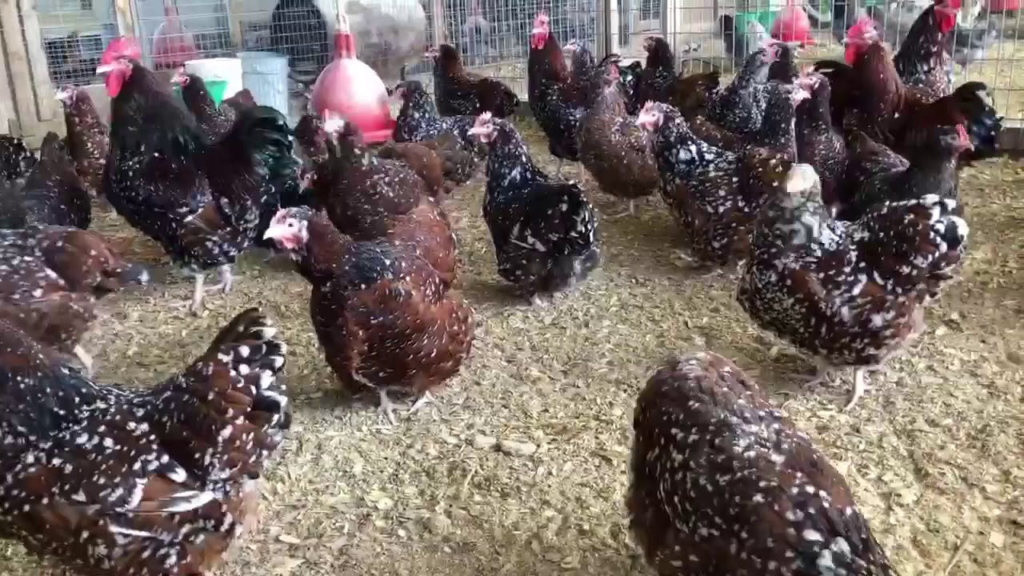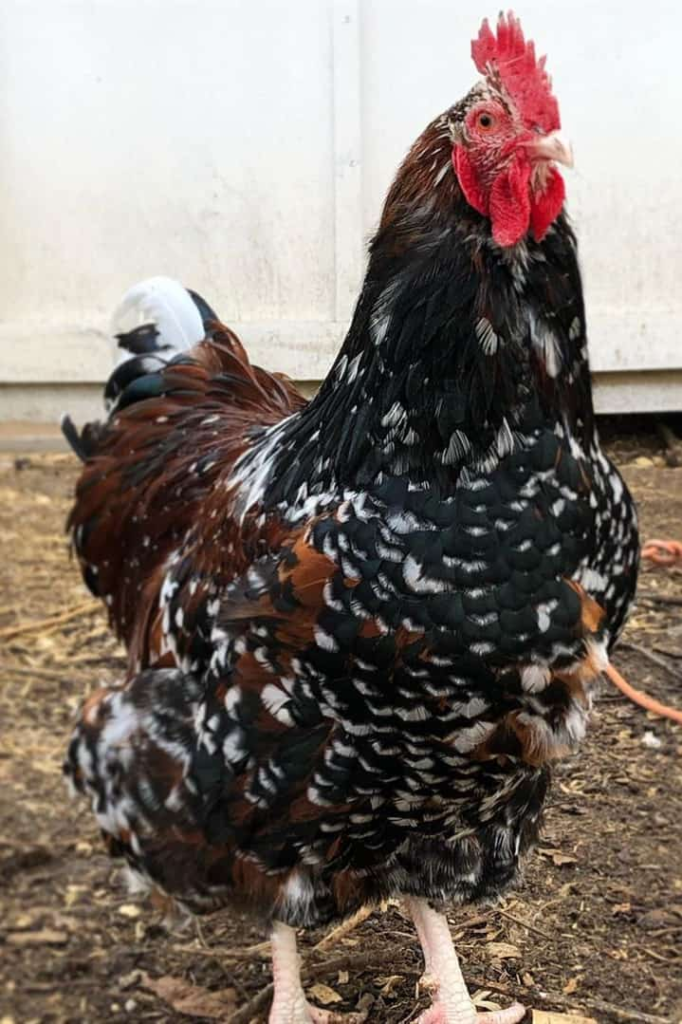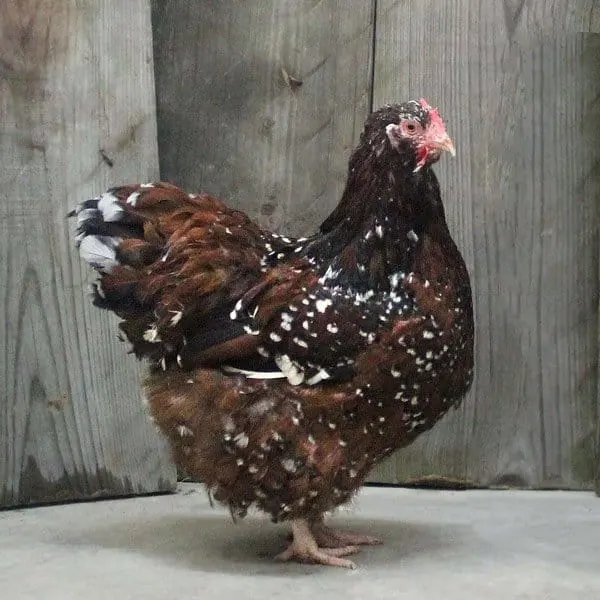Last Updated on November 2, 2023 by Fumipets
Jubilee Orpington Chicken: The Majestic Beauty of Poultry
The Jubilee Orpington Chicken is a delightful breed known for its striking appearance and gentle disposition. Originating from the United Kingdom, these chickens have captured the hearts of poultry enthusiasts worldwide.
They are characterized by their beautiful and regal coloring, making them a standout addition to any flock. Jubilee Orpingtons are renowned for their friendly nature, making them an excellent choice for both beginners and experienced chicken keepers. These birds are dual-purpose, offering not only charming looks but also good meat production.
Jubilee Orpington Chicken
In order to create a durable, dual-purpose species that could lay successfully in colder climes, the British breed known as the Jubilee Orpington Chicken was created in the late 19th century. The breed is still utilized for both meat and eggs, but because of its stunning plumage and placid disposition, it has mostly become a display bird. The classic backyard hen, orpingtons are wonderful complements to any backyard coop.
We cover all you need to know about this very British bird in this post. Let’s get going!
Quick Facts About Jubilee Orpington
| Species Name: | Gallus Gallus Domesticus |
| Family: | Phasianidae |
| Care Level: | Easy |
| Temperament: | Calm, docile, friendly, tolerant |
| Color Form: | Black, white, buff, blue, and splash |
| Lifespan: | 8+ years |
| Size: | 7-8 pounds |
| Diet: | Foraging, pellets, grains, mash |
| Minimum Enclosure Size: | 5 square feet in a coop, 20 square feet in a run |
| Enclosure Set-Up: | A weatherproof coop with large run |
| Compatibility: | Calm, friendly, gets along well with other breeds |
Jubilee Orpington Overview
Despite being popular in the United Kingdom since the late 1800s, the Jubilee Orpington has just lately been brought to the United States. As a result, it is a very uncommon and challenging to locate Orpington variety in the United States. They are one of the kindest varieties of chicken, valued for their tranquil, docile, and trustworthy nature. They are one of the biggest breeds of chicken, weighing up to 8 pounds.
The Diamond Jubilee celebration of Queen Victoria’s reign, during which she was given a flock of Jubilee Orpingtons as a gift, inspired the name of the Jubilee Orpington.

How Much Do Jubilee Orpingtons Cost?
Despite the rarity of the breed, they are not very costly birds. A Jubilee Orpington chick normally costs $15 to $20, or around $6 per egg. That is, of course, assuming you can locate one. Breeders are hard to come by, and it might be challenging to locate chicks since the breed has just recently been brought to the United States.
Typical Behavior & Temperament
One of the friendliest chicken breeds available is the orpington, and Jubilee Orpingtons in particular. There probably isn’t a more submissive and serene chicken around. They are a great option for backyard breeders, both professionals and beginners, due to their resilience and enormous size. These birds are even known to deliberately seek out touch and human contact since they appreciate it so much!
They are considered to be exceptional moms and easily hatch eggs that are put beneath them. Their dense feathering makes them resilient and particularly tolerant of cold weather. They are outstanding display birds due to their ease of handling, high degree of adaptability, and ability to bear confinement. Even when given free range, they are not exceptional foragers and prefer to eat from feeders.
If you’re raising Jubilee Orpingtons for meat, they’ll be ready in around 22 weeks. They consistently lay 200–280 eggs every year.
Appearance & Varieties
These gorgeous, fluffy birds are among the biggest types of chickens, and their intricate feather patterns may take up to 18 months to completely develop. They usually have a rich mahogany background hue with black and white specks scattered throughout, with a vivid scarlet or emerald shine when exposed to sunlight. They often have red earlobes, faces, and eyes, with white beaks, legs, and feet.
The Standard Orpington, the original Orpington variety, is available in Blue, Buff, Cuckoo, Spangled, and Black. The Jubilee Orpington is one of its color variants.
How to Take Care of the Jubilee Orpington
Jubilee Orpingtons need a great lot of room since they are such huge birds. Having said that, their housing needs are not much different from those of other chicken breeds.
Coop
Jubilee Orpingtons need a coop with at least 4 square feet of room per bird, preferably more. We advise a minimum of 6 square feet simply to be cautious in this case, particularly if you have a mixed flock. This additional room will ease any tension and stop your chickens from pecking at one another, which they tend to do under pressure. Make sure that each perch in their coop has a space of around 10 inches since chickens prefer to spread their wings and rest there.
Nesting boxes
Jubilee Orpingtons require a cozy nesting box to lay all of their wonderful eggs since they are such prolific layers. Despite being bigger than most other chicken breeds, they should be OK in a conventional 1212-inch nesting box since much of their additional bulk is made up of their fluffy feathers. In a warm, well-ventilated coop where they feel safe and secure and have enough of solitude, their nesting box should be installed.
Run
All hens thrive when allowed to roam freely, but for many chicken caretakers, this is just not an option. If so, you’ll need to construct a secure run where your hens may fly about, forage, scratch, and exercise. For each bird, we advise at least 10 square feet of run area, but more is always preferable. Fortunately, you don’t need to build a complicated fence to create a run for your birds since their weight prevents them from flying higher than a few inches off the ground.
Do Jubilee Orpingtons Get Along With Other Pets?
Jubilee Orpingtons and other Orpingtons, as well as other varieties of chicken, get along wonderfully. They seldom fight unless they are housed in small confines for an extended amount of time since they are such amiable, resilient, and adaptable birds. Your Orpingtons will get along with most other hens if you allow them lots of room in their coop and opportunity to roam about freely.

What to Feed Your Jubilee Orpington Chicken
Orpington chicks need a high-quality diet that contains at least 20% protein. They can transition to conventional layer feed after they are around 16 weeks old. These hens will also need daily leafy greens since they are not very good foragers. They are also known to be very slothful birds that spend the whole day perched next to their feeder, which increases their risk of obesity. To avoid this, you may need to watch their meals closely.
Leafy greens, boiled legumes, cereals and grains, fruits like berries and apples, and vegetables in moderation should all be introduced to the diet of backyard orpingtons. Your organic cooking leftovers will also be adored by them.
Keeping Your Jubilee Orpington Healthy
Any seasoned Orpington owner will tell you that the Jubilee Orpington is a strong, sturdy, and healthy chicken that seldom gets sick. Of course, this assumes that they are fed a wholesome diet and given lots of room to wander about and exercise. These birds’ main health concern, which may affect anything from their feet to their capacity to produce eggs, is often weight. Don’t overfeed them, please.
Breeding
The Jubilee is a fantastic breeder, much like all other Orpington types. The best results come from providing your hens with a natural habitat that is spacious and comfortable. Breeding animals should ideally have a separate breeding enclosure with their own coop and run from the rest of your flock. Also important is the rooster-to-hen ratio: One adult rooster to around 10 hens is a good general rule of thumb. Even if you want to let your hen hatch the eggs, it’s a good idea to collect them everyday so you can choose the ones that appear the healthiest. Additionally, keeping fertilized eggs in a refrigerator for 24 hours before incubation helps assure successful hatching.

Are Jubilee Orpingtons Suitable for You?
The Jubilee Orpington is a fantastic option for modest home breeders or a successful egg company. They are excellent pets for novices and families with young children since they are amiable, docile, and simple to care for, and because they produce eggs so prolifically. Orpingtons are sturdy, resilient birds that can cope with cold temperatures with ease. They are also very adaptive and can readily adapt to live in a small space. However, since they are not the best foragers, you may need to feed them more often than with certain other breeds.
Overall, the popularity of the Jubilee Orpington shows that it is a fantastic breed of chicken for home breeders.
5 FAQs About Jubilee Orpington Chicken:
Where do Jubilee Orpington Chickens originate from?
Jubilee Orpington Chickens hail from the United Kingdom, and they are a colorful variety of the well-known Orpington breed.
What makes Jubilee Orpington Chickens stand out in terms of appearance?
These chickens are strikingly beautiful with their regal coloring. Their feathers showcase a rich and vibrant combination of mahogany, black, and white.
Are Jubilee Orpington Chickens suitable for beginners?
Yes, they are an excellent choice for beginners. These chickens are known for their gentle and friendly temperament, making them easy to handle and care for.
Do Jubilee Orpington Chickens serve a dual purpose?
Yes, they are dual-purpose birds. In addition to their captivating appearance, they are also valued for their meat production.
How can I care for Jubilee Orpington Chickens to keep them healthy and happy?
Providing a safe and spacious coop, a balanced diet, and regular health check-ups are essential for the well-being of these chickens. Ensuring they have access to clean water and a comfortable living environment will keep them content and thriving.


















